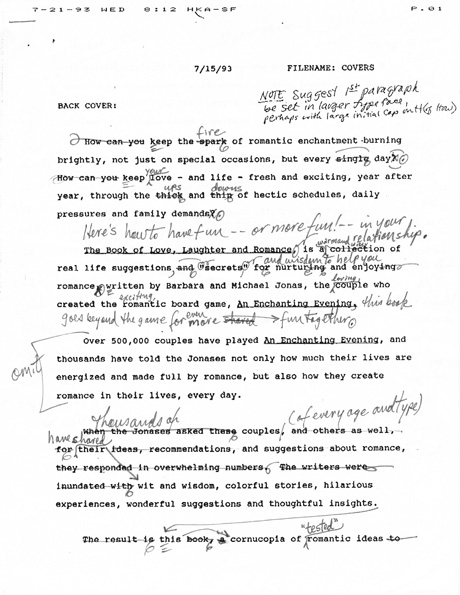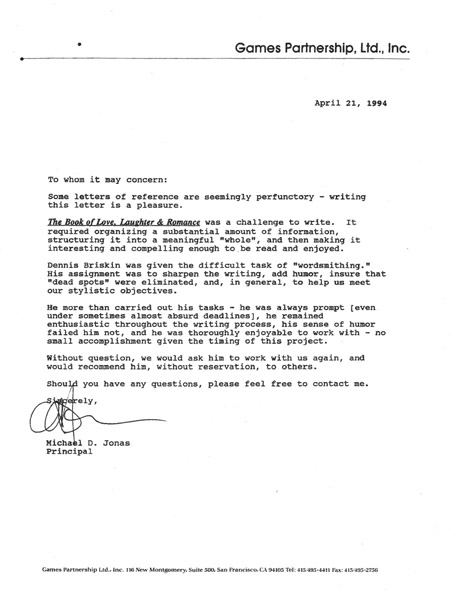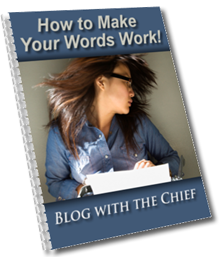Client Case Study

The Book of Love, Laughter and Romance
by Barbara and Michael Jonas
The authors were a smart, experienced team, creators of the highly successful couples game, “An Enchanting Evening.” They wanted to publish a lively, highly readable book that would appeal to their target audience of adult couples wanting more romance and excitement in their relationship.
They had taken the text as far as they could and realized their own efforts would fall short of making a hit with their readership. They had a “good enough” draft manuscript, but the text, and the ideas behind it, needed a catalyst, someone to make the words “sing” to their readers.
Our assignment, under tight deadline pressure: Read the manuscript, evaluate it against their criteria and fix it. Overnight, we read the three chapters they handed us, wrote a detailed two-page memo of our evaluation and recommendations, and marked up the manuscript down to the finest level of detail. We also asked specific questions to remove ambiguity and fill in the gaps.
NOTE: What follows is not for the faint of heart. Our marked-up copy may seem like the editorial equivalent of a bloody abdominal surgery. This is what a working writer/editor does to “turn straw into gold.” This level of quality and speed is how we earn our fees and garner the kind of glowing reference letter Michael Jonas wrote about our work. (See below.)
Excerpts from my evaluation letter to them:
. . . Despite the extensive editing and comments, I stick with my “Don’t worry, you will do fine” comment. You will do fine, even with the ms. as it is now, because your material is so strong and you know your audience and their desires so well.
To produce the best possible book, you must solve several writing problems:
1. Vagueness/weak visualization/lack of specific detail:
Example: “Michael had to leave on a business trip before we could resolve things, . . . ” Say whether the trip is one day, one week or one month. The word things is weak compared to “the tension between us” which itself could be more specific.
Example (p. 2): “I prepared the living room, set up the fireplace and put everything out.” This sentence doesn’t show the room’s look and feel. And then: “The room was transformed.” Into what?
Why does it matter? Leaving out so many specific, concrete details forces the reader to work harder, which is not good. The strongest writing is vivid, specific and direct, with clearly defined images.
2. Wordiness/cliches/awkward locutions: You use too many words and often not the best ones. Wherever I could, I recast phrases to be more direct, concise and fresh. . . . I hope you can see the difference and why my versions are stronger.
I did far more work than expected. . . . in my professional opinion based on 22 years experience, it needed doing. . . . I hope you will not be too distressed at my comments. They are all in the spirit of “Here’s how to do it even better.”
Following are a sample of marked-up copy and the client testimonial letter.





